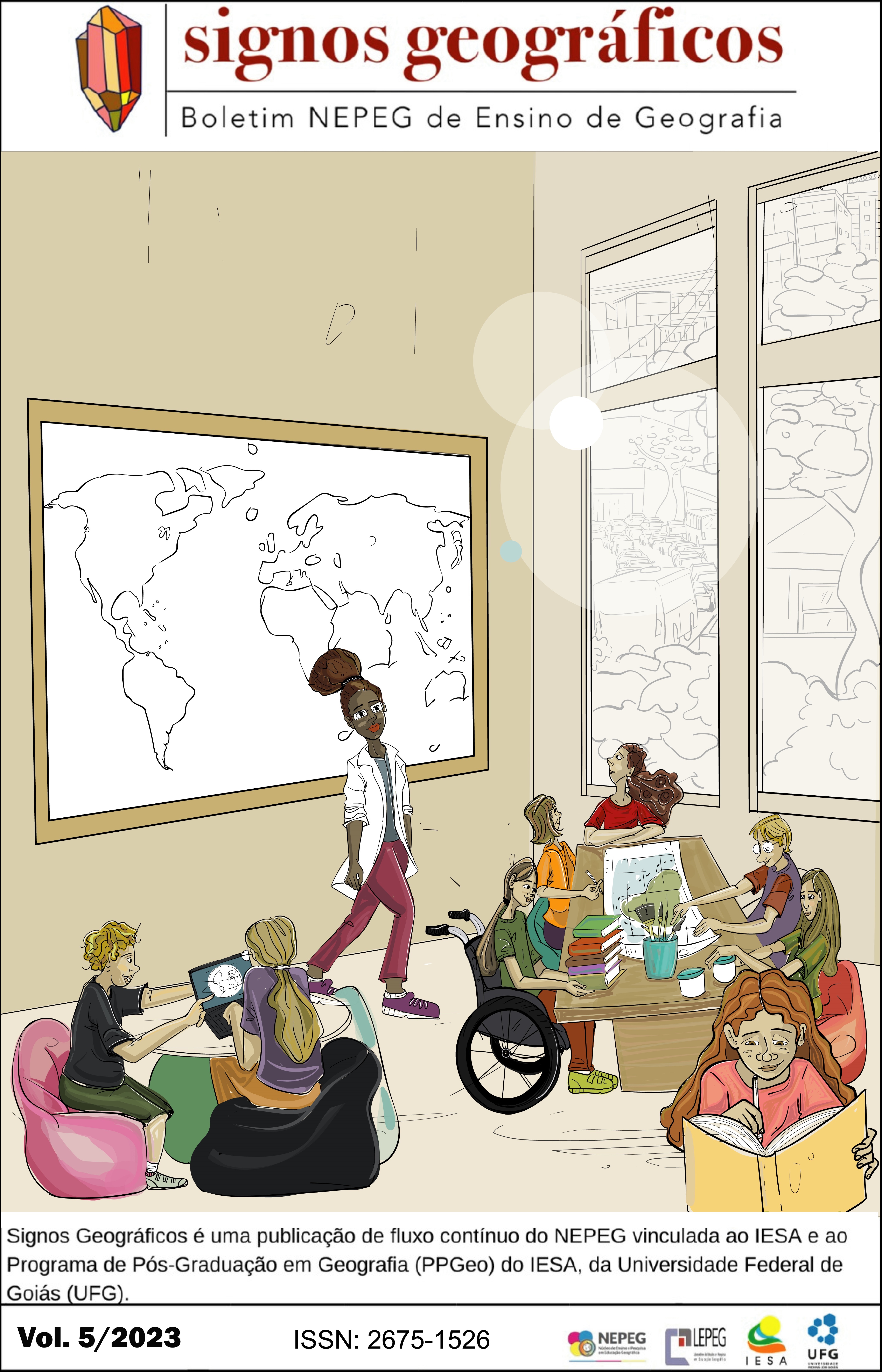INDICATOR ELEMENTS OF THE MOBILIZATION OF GEOGRAPHICAL THINKING BY HIGH SCHOOL STUDENTS
DOI:
https://doi.org/10.5216/signos.v5.74935Keywords:
spatial practices, influences of globalization, mobilization of thought elements, critical-reflective interpretation, method for teachingAbstract
This work is the result of theoretical-practical reflections related to basic education on the importance of the epistemic elements of Geography for geographic analysis. In view of this, the following problematizing question emerged: in a practical situation of experimentation in the context of a high school classroom, can one identify indicator elements that show the potential for mobilizing the geographical thinking of high school students? To achieve this purpose, the work aimed to analyze the mobilization of geographic thinking in the interpretation of spatial practices by high school students in public schools in Gama, in the Federal District, in 2021. The methodology is structured in the approach of qualitative research and modality participant. For that, a bibliographical and field research was carried out. In the field, didactic-pedagogical actions were carried out through a pedagogical workshop and application of tests with problem situations. For data analysis, the content analysis technique was used to identify elements that indicate geographical thinking in phrases or words in the subjects' positions. The results show that students, when stimulated by problem situations, with geographic questions, mobilized elements that indicate geographic thinking – logical concepts and principles. Therefore, it is indicated to problematize the themes/contents with geographic questions oriented with elements of geographic thought in order to provide the students' ability to interpret the spatiality of reality in a critical-reflexive and propositional way.








